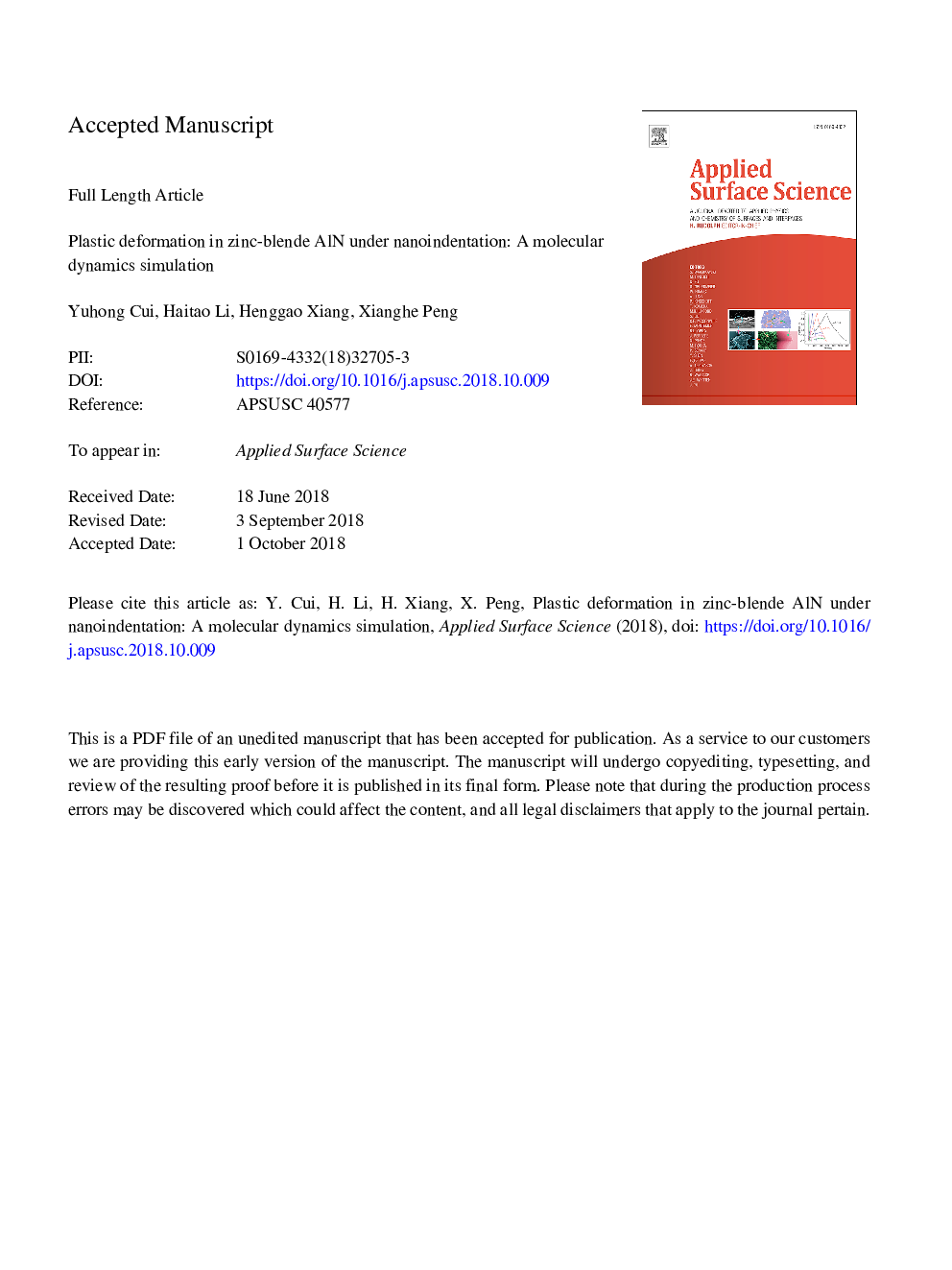| Article ID | Journal | Published Year | Pages | File Type |
|---|---|---|---|---|
| 11555435 | Applied Surface Science | 2019 | 28 Pages |
Abstract
Using molecular dynamics (MD) simulations, we studied the mechanical response and nanostructure evolution of aluminum nitride with zinc-blende structure (zb-AlN). The defect types and structural evolutions as well as the formation and propagation of prismatic loops were discussed. The generalized stacking fault energy (GSFE) was also calculated to explain the glide of dislocations. It showed that perfect dislocations with Burgers vectors bâ¯=â¯1/2ã1â¯1â¯0ã and Shockley partial dislocations with bâ¯=â¯1/6ã1â¯1â¯2ã occur simultaneously for the indentation on (1â¯1â¯0) and (1â¯1â¯1) planes. The indentation force-depth (P-h) curve exhibits great compliance compared with that determined by the Hertz theory in the elastic phase. And the first three main drops on the P-h curve are related to dislocation nucleation and expansion. Moreover, a “lasso”-like formation mechanism of prismatic loops was found and the GSFE curves were also analyzed to assess the dislocation slips in zb-AlN. It was found that the dominant dislocation is of shuffle-set with Burgers vector bâ¯=â¯1/2 ã1â¯1â¯0ã, by comparing the GSFE along 111<1¯10> with that along 111<112¯>.
Related Topics
Physical Sciences and Engineering
Chemistry
Physical and Theoretical Chemistry
Authors
Yuhong Cui, Haitao Li, Henggao Xiang, Xianghe Peng,
